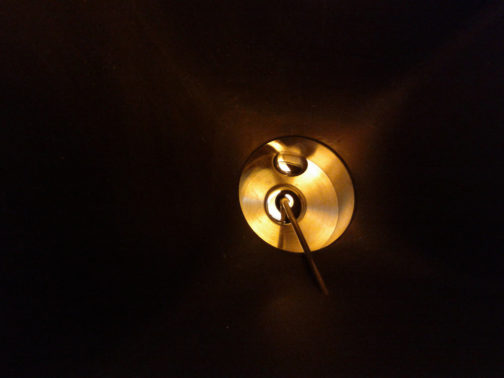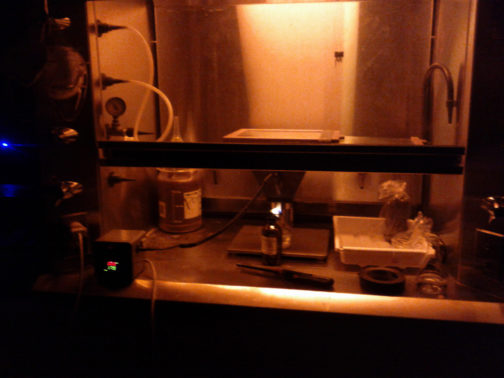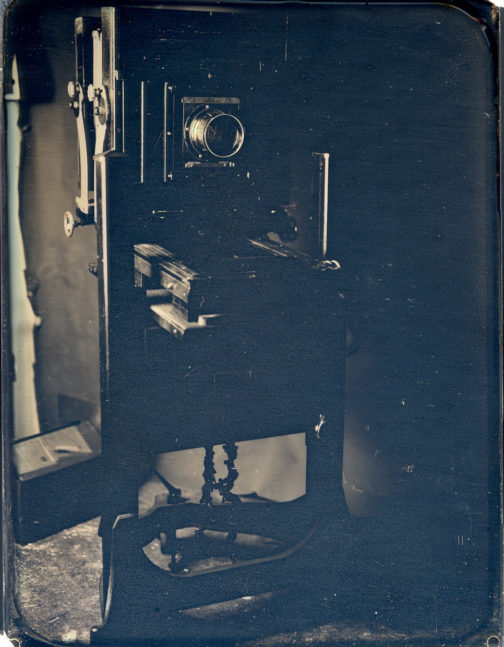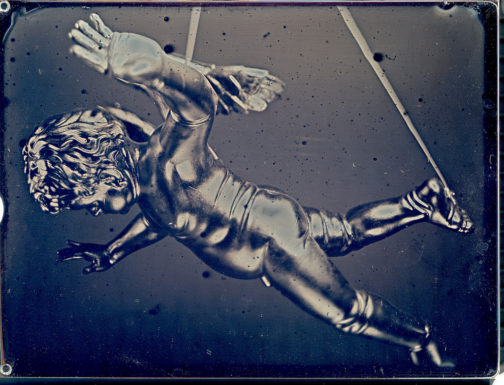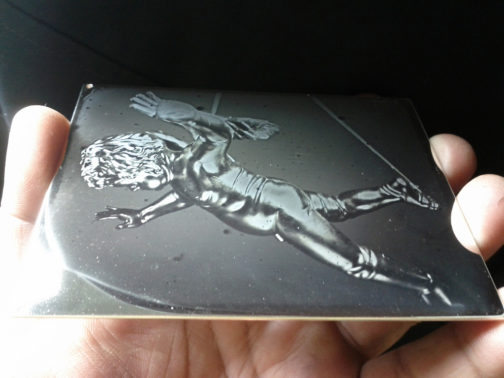Experiments
Two weeks before my son was born I managed to make a couple of daguerreotypes. Even though the silicone heating pad used to heat up the mercury was burned out on the temperature controller, I decided to put some mercury in the pot and heat up the mercury cup using a simple spirit lamp.
The temperature could still be monitored with the temperature controller thermocouple. I have to admit, heating up mercury is not something to be taken lightly and there danger not only for me but for my studio mates if there should be a spill or inadequate ventilation of the mercury vapor. Before the mercury every came to the studio I made sure there was a way to deal with a spill by purchasing a mercury spill kit and a used Bacharach MV2 mercury sniffer. The last essential piece of equipment is a full face respirator with the appropriate filters which will be purchased sooner than later. I found the mercury sniffer to be an incredibly useful tool as it allowed me to test the air inside the studio and the effectiveness of my fume hood. I found that the fume hood works perfectly and that no mercury vapor is present both inside the studio, in the wood shop outside the studio, or leaking from the ducting while the pot is at a working temperature of 176 degrees Fahrenheit. thank goodness…..
One thing that I discovered, even after the mercury pot has cooled and the mercury cup has been removed, the walls of the pot continue to emit dangerous levels of mercury vapor but the emission gradually falls off to very slight levels after a few days. The pot now gets put into an airtight container when not in use.
So the first 1/4 plate daguerreotype I made in my studio was of my Deardorff studio camera. The plate was buffed on the wheel then hand buffed using rouge only. The plate was then fumed over iodine to a rose/sepia color. I used the 8 x 10 Deardorff and a old Soviet 150mm f3.5 lens. The exposure was very much a guess and was exposed for 45 minutes in the studio using one 450 watt CFL fixture. I developed it for 6 minutes with the mercury at 170. The alcohol lamp keeps a constant temperature on the mercury pot but requires some fussing. It was overdeveloped a bit and has a light mercury frost on it but I got an image. This was scanned using my flatbed with some spacers to keep the plate from touching the glass.
The second 1/4 plate that I made a few days later was done almost exactly like the last one only I used a second hand buff with lamp black and was developed for 5 minutes at 170. The exposure was 30 minutes. The image is of a small golden cherub sculpture done by Dan Webb. I make it into the studio during the day on Mondays and he is always there working just outside his studio door. I noticed the sculpture a while back and thought it would make a good subject for a daguerreotype. The resulting plate had some areas where no image developed and I am still wondering what happened but I got a decent image for a second try. This image no longer exists as I did not do the final step of gilding and will be reusing the plate later.
Today I found out that my order of bromine will be coming in on Monday so I am very excited to get my exposure times down to a few seconds. Believe it or not, the bromine is the nastiest of chemicals involved in daguerreotypy. While the mercury is a neurotoxin that can build up in your system, it can be controlled with proper ventilation/containment. Bromine in its elemental state is an extremely corrosive vile red liquid that emits noxious clouds of thick red vapor at room temperature. Containment is an issue as it readily eats or corrodes most metals and even has a violent exothermic reaction with aluminum. If not properly handled, exposure to the liquid or vapors will cause severe burns and can cause death by destroying your lungs via severe pulmonary edema. Once I get the bromine to the studio it will be used to charge silica gel. The silica readily absorbs the chemical and so there is no elemental bromine used to fume plates and will be less volatile inside the fuming box.
I have have been off work since my son was born and am feeling a little tired. I have not had more than 3 hours of sleep at a time but I can’t complain. My wife, has had the same sleep schedule while having to breastfeed and recover from major surgery. I look forward to getting back into the studio soon and making some more images….. stay tuned
